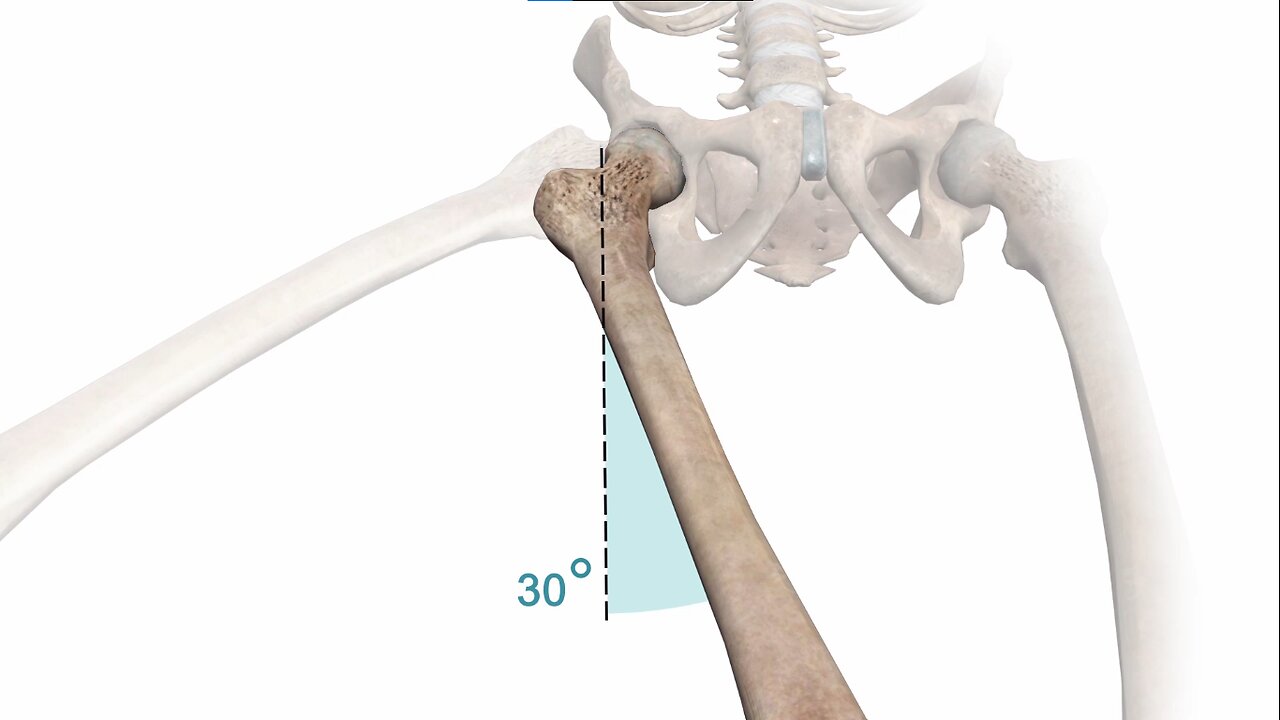Premium Only Content

Animated human body anatomy of hip labral tear part 2 hip
hip_labral_tear_02_hip_biomechanics
===
Hello, my name is Nula Eastlink and I'm a physical therapist specialize in outpatient orthopedic and sports medicine. Today I'll be talking about biomechanics and functional anatomy of the hip. The hip is the largest ball and socket joint in the body. It differs in design from the more common hinge joints in order to meet the requirements of ambulation.
In addition to its stability, the hip joint is also a very mobile joint, second only to the shoulder joint. In the body. The hip joint has three degrees of freedom. That is, it moves in three different planes, sagittal plane flexion, extension, frontal plane, abduction, abduction, and transverse plane, external internal rotation.
In the sagittal plane, the hip flexes to 120 degrees and extends to 20 degrees. In the frontal plane, the hip abducts 45 to 50 degrees and AUCs 20 to 30 degrees
in the transverse plane. The hip, externally, or laterally [00:01:00] rotates 45 degrees and internally or immediately rotates to 35. During gait, the hip moves a total of 40 degrees in the sagittal plane, 11 degrees in the frontal plane, and eight degrees in the transverse plane. Ground reaction forces are also a factor for hip biomechanics during gait.
As the body advances from heel strike to toe off the ground, reaction, force vector changes from anterior to the hip joint to posterior. That brings us to the end of the discussion. Thank you for joining us.
-
 43:09
43:09
VINCE
2 hours agoSPECIAL: "Obamagate" DEEP-DIVE with Gen. Mike Flynn, Mike Benz and Paul Sperry
32.9K51 -
 LIVE
LIVE
Benny Johnson
1 hour ago🚨CIA Whistleblower SPEAKS! Tulsi Gabbard Joins LIVE to Expose New Obama-Gate BOMBSHELL: 'Burn Bags'
8,540 watching -
 LIVE
LIVE
LFA TV
13 hours agoLFA TV ALL DAY STREAM - THURSDAY 7/31/25
4,272 watching -
 LIVE
LIVE
The Big Mig™
2 hours agoFBI Burn Bags, Hidden SCIF’s & Truth About Mar-A-Lago Raid
2,725 watching -
 1:50:11
1:50:11
Dear America
2 hours agoFBI Discovers THOUSANDS Russia Hoax Docs In “Burn Bags”!! + Pelosi EXPOSED For Insider Trading!!
85.3K64 -
 1:27:12
1:27:12
Tucker Carlson
2 hours agoTony Aguilar Details the War Crimes He’s Witnessing in Gaza
45.6K83 -
 LIVE
LIVE
Badlands Media
5 hours agoBadlands Daily: July 31, 2025
4,079 watching -
 LIVE
LIVE
Matt Kohrs
11 hours agoHUGE Earnings Beat, Inflation Data & New Record Highs || Live Trading Options & Futures
540 watching -
 19:44
19:44
Bearing
3 hours agoWorld’s CRAZIEST Feminist Wants AMERICANS to WAKE THE F*** UP 🦅💥
6.26K29 -
 47:09
47:09
Randi Hipper
1 hour agoUNITED STATES BITCOIN RESERVE IS COMING! WHITE HOUSE CRYPTO REPORT EXPLAINED
5.51K